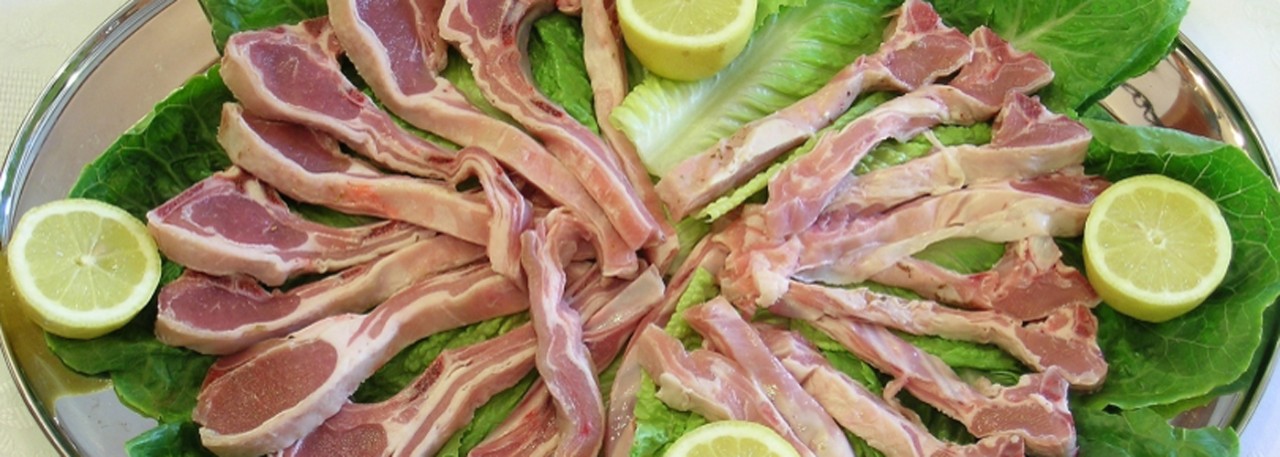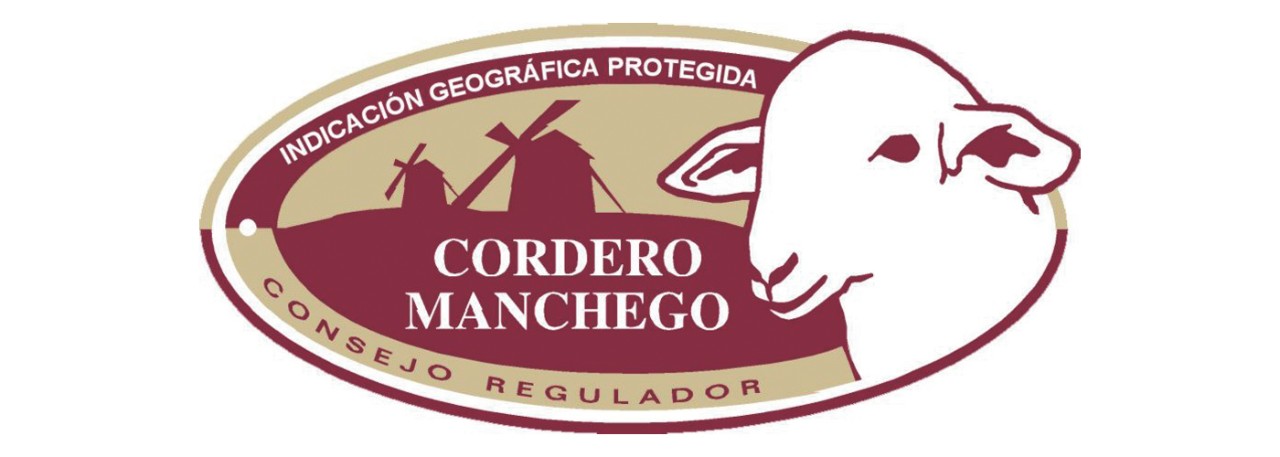.png.transform/rendition-xs/image_image%20(1).png)
Cordero Manchego PGI
Lamb exclusively from sheep of the Manchega breed.
Tasting notes
It is very tender and succulent, mild-flavored, with no abnormal flavors. It has the beginnings of intramuscular fat, which gives it a characteristic, very pleasant bouquet.
Other notes
The meat is lean or medium-fat, and is covered with a thin film of fat which partially reveals the underlying muscles. This becomes thicker over the rump, at the start of the tail and on the back and kidney area, revealing the muscles of the leg and shoulder as well as the trapezii.
Production / Processing method
The specialization in sheep farming in this region stems from traditional production systems based on the Manchega breed, which is used for both meat and milk. The sheep are able to forage on stubble, fallow or uncultivated land, scrubland, etc. in poor areas or places where farming is difficult, which might otherwise not be used. In the large, dry-farmed areas on the extensive plains in Castile-La Mancha, where the traditional crops are vine, cereals and legumes, sheep farming complements other types of agriculture by allowing the sheep to feed on fallow land and stubble.
The lambs must be stabled for feeding. They suckle freely and receive white straw and concentrates authorized by the Regulatory Council. The minimum period for natural lactation is 30 days. After weaning, the lambs continue to receive white straw and authorized feeds but under no circumstances may they receive growth promoters or finishers.
On arrival at the slaughterhouse and before slaughter, the lambs must be allowed to rest for at least 12 hours, during which time they are given sugared water on demand at a proportion of one per cent.
After the slaughter, the carcasses obtained are classified according to: weight (between 10 and 14 kg), presentation (complete, without blows or bruises and without yellowish icteric dyes), conformation (well shaped, with harmonic proportions and slightly rounded profiles), fat (low or medium, pelvic-renal fat should not completely cover the kidney) and color of the meat (pale pink or pink).
The carcasses are aired until the inside of the muscle reaches the ideal temperature for conservation and transportation. For periods of less than 24 hours, they must be stored in cold rooms at 3-4ºC / 37-39º F and, for longer periods, at 1-3ºC / 33-37ª F. The maximum period for conservation is six days.
Geography / Relief and climate
This is a sparsely-populated area, with a few, widely-dispersed large towns. Above all, it is a farming area and a good place for cattle farming, especially sheep. Although traditionally Castile-La Mancha is considered to be flat, the most characteristic part – La Mancha – is in fact a high plateau crossed by mountains, in which two thirds of the territory are at an altitude of over 1965 ft and the minimum altitude is 656 ft above sea level.
The main rivers (Tagus, Guadiana alto, Júcar alto and Júcar medio, Záncara, Cigüela, Jabalón and Riánsares) have very irregular flows but are widely used for irrigation.
The climate is a fundamental factor for agriculture and for extensive cattle rearing. It is defined as continental, Mediterranean temperate, with marked temperature differences, both between daytime and night-time temperatures and from season to season. The limited rainfall is unevenly distributed amongst the seasons. The absolute maximum temperatures may exceed 35ºC in the summer months.
Average annual rainfall is about 1.3 ft. Not only is this a low figure, but rainfall is distributed unevenly.
Regulatory Council
Consejo Regulador de la IGP Cordero Manchego
Ctra. de Las Peñas, km 3,200
02049 Albacete
Tel: (+34) 967 224 020
correo@corderomanchego.org
www.corderomanchego.org
Sources:
- Spanish Ministry of Agriculture
- Regulatory Council, Cordero Manchego PGI
The meat is lean or medium-fat, and is covered with a thin film of fat which partially reveals the underlying muscles.


- /content/dam/en/icex-foodswines/images/products/fresh-meat/cordero-manchego-pgi/Cordero%20Manchego%20PGI%20carr1.jpg
- /content/dam/en/icex-foodswines/images/products/fresh-meat/cordero-manchego-pgi/Cordero%20Manchego%20PGI%20carr2.jpg

Albacete (Castile-La Mancha)
